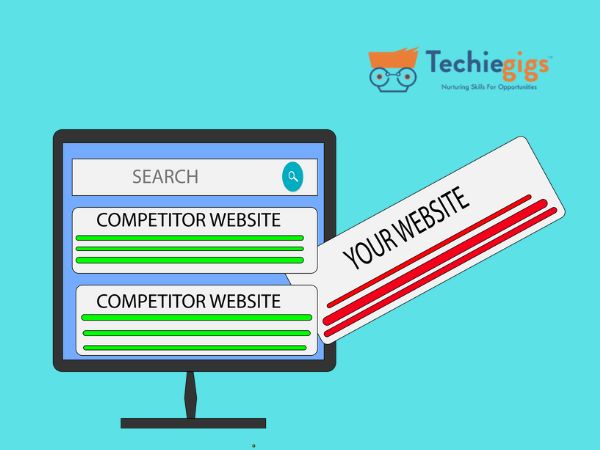The business landscape is highly competitive, and without a Competitor Analysis Framework, you’re navigating without a clear direction. Imagine this: you’re launching a product with full confidence, only to realize your competitor has already seized the market with a superior offering. Sounds like a nightmare, right? That’s why an effective Competitor Analysis Framework is your secret weapon.
In this blog, we’ll uncover the essence of a Competitor Analysis Framework, why it’s crucial, and how you can implement it to outsmart the competition. Ready to embark on this insightful journey?
What Is a Competitor Analysis Framework?

At its core, a Competitor Analysis Framework is a structured approach to studying your competitors—their strengths, weaknesses, market strategies, and customer engagement tactics. This framework empowers businesses to:
- Identify key players in their industry.
- Benchmark performance against competitors.
- Uncover market opportunities and threats.
- Refine strategies for a competitive edge.
By leveraging a Competitor Analysis Framework, businesses can stay proactive rather than reactive. This means anticipating market trends, adapting strategies before challenges arise, and continually seeking opportunities to innovate and lead in the industry.
Why Is a Competitor Analysis Framework Essential?
- Stay Ahead of Market Trends: The business world evolves rapidly. Monitoring competitors allows you to anticipate market shifts and adapt accordingly.
- Understand Customer Preferences: Observing competitors’ customer interactions sheds light on what works and what doesn’t.
- Spot Gaps in the Market: A detailed analysis can reveal unmet customer needs, giving you the chance to fill the void.
- Refine Marketing Strategies: Learning from your competitors’ successes and failures can enhance your own campaigns.
- Boost Innovation: The insights gained from a Competitor Analysis Framework can inspire creative ideas and new approaches.
Building Your Competitor Analysis Framework
1. Identify Your Competitors

Your first step is to pinpoint who you’re up against. Categorize competitors into:
- Direct Competitors: Businesses offering similar products or services.
- Indirect Competitors: Those fulfilling similar customer needs differently.
Use tools like SEMrush, Ahrefs, and Google Alerts to identify competitors effectively. SEMrush helps analyze competitors’ organic and paid search strategies, Ahrefs provides insights into their backlink profiles and top-performing pages, and Google Alerts notifies you of new mentions or content updates from your competitors.
2. Gather Key Data
Once identified, start collecting actionable data on competitors:
- Products/Services: What do they offer, and how do they stand out?
- Pricing: Analyze their pricing models for insights.
- Marketing Strategies: Assess their campaigns, keywords, and ad placements.
- Customer Feedback: Review testimonials, comments, and complaints to understand their strengths and weaknesses.
- Social Media Presence: Study their engagement tactics and content strategies.
3. Analyze Strengths and Weaknesses
Create a SWOT analysis for each competitor: For example, if your competitor is a leading e-commerce platform, your SWOT analysis might look like this:
- Strengths: Established brand, wide customer base, advanced logistics network.
- Weaknesses: High operational costs, limited flexibility for small vendors.
- Opportunities: Growing demand for niche marketplaces, integration of AI for personalized shopping.
- Threats: Emerging competitors with lower fees, changing consumer preferences.
4. Evaluate Market Positioning

Understand how competitors position themselves in the market. Look into their brand messaging, tone, and unique selling propositions (USPs).
5. Track and Monitor
Competitor analysis isn’t a one-time task. Continuously monitor their activities and adapt your strategies using tools like:
- BuzzSumo: For content performance.
- Hootsuite: For social media monitoring.
- Google Trends: To track market interest.
Practical Example of a Competitor Analysis Framework
Let’s consider a tech startup aiming to disrupt the e-commerce space and a healthcare provider entering a competitive telemedicine market.
For the tech startup:
- Identify Competitors: Shopify, BigCommerce, and Wix.
- Gather Data: Analyze Shopify’s pricing, BigCommerce’s scalability, and Wix’s user-friendliness.
- SWOT Analysis:
- Shopify’s strength: Robust features.
- Weakness: High pricing for small businesses.
- Opportunity: Simplify complex features for affordability.
- Threat: Wix’s growing popularity.
- Market Positioning: Shopify focuses on large enterprises, creating an opportunity to target startups.
For the healthcare provider:
- Identify Competitors: Teladoc Health, MDLIVE, and Amwell.
- Gather Data: Study Teladoc’s extensive network of specialists, MDLIVE’s affordable pricing, and Amwell’s user-friendly app.
- SWOT Analysis:
- Teladoc’s strength: Comprehensive services.
- Weakness: High consultation costs.
- Opportunity: Focus on underserved rural areas.
- Threat: Rising competition from regional providers.
- Market Positioning: Teladoc targets urban areas, allowing new entrants to cater to rural communities.
By implementing these steps, businesses in different industries can carve out niches and build winning strategies.
Pro Tips for a Winning Competitor Analysis Framework

- Leverage Data Analytics: Use advanced tools for real-time insights.
- Focus on Customer Feedback: Competitor reviews can be a goldmine of information.
- Stay Agile: Update your analysis frequently to keep pace with industry changes.
- Collaborate Across Teams: Involve marketing, sales, and product teams for a comprehensive analysis.
Ready to Outpace Your Competition?
Designing a competitor analysis framework might sound like a daunting task, but once you break it down into manageable steps, it becomes an incredibly insightful and rewarding process. By understanding your competitors’ strengths, weaknesses, and strategies, you gain the clarity needed to position your business effectively and make informed decisions.
Remember, competitor analysis isn’t a one-time task—it’s an ongoing journey. Markets evolve, new competitors emerge, and customer preferences shift. Regularly updating your framework ensures you stay ahead of the curve and adapt to changes with confidence.
So, start small, stay curious, and refine your framework as you go. With the right mindset and tools, competitor analysis can become your secret weapon for business growth.



